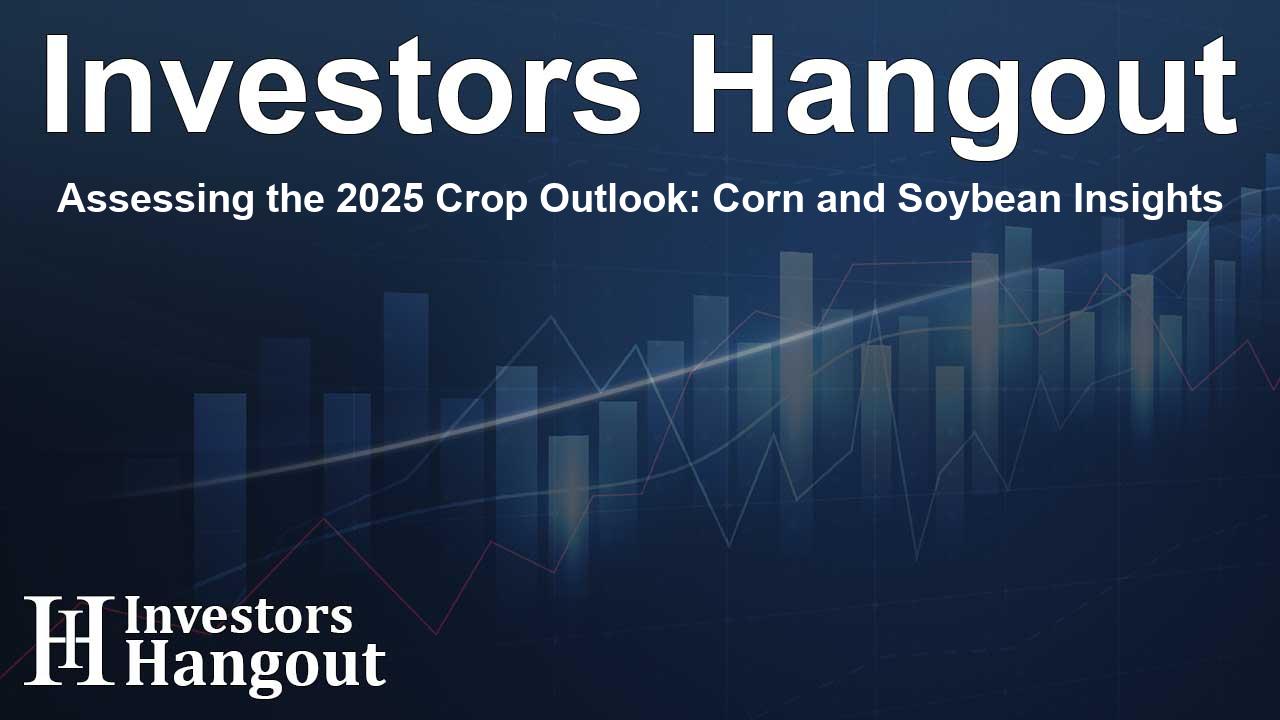Assessing the 2025 Crop Outlook: Corn and Soybean Insights

2025 Crop Production Challenges: Corn and Soybean Insights
As we delve into the 2025 growing season, it becomes evident that significant challenges lie ahead due to reduced precipitation levels. This trend not only reflects a notable deviation from last year's figures but also poses substantial risks to corn and soybean production across the United States. Numerous agricultural experts have raised concerns over prolonged drought conditions affecting key farming regions, especially where these two crops are predominantly grown.
Corn Production: Facing Drought's Impact
The ongoing drought has taken a toll on major corn-producing states within the U.S., affecting regions like Kansas, Oklahoma, and Iowa. The lack of substantial rainfall since the autumn before the 2025 season has resulted in limited soil moisture crucial for early crop development. Without significant rainfall by mid-July, farmers could face further yield losses, a scenario concerning many stakeholders in the agricultural landscape.
Weather Forecasts and Their Implications
Expectations for the weather in the latter half of July indicate slightly elevated temperatures in the Corn Belt, which could exacerbate drought stress on the corn crops. Reports highlight that widespread rainfall has been relatively scarce, and projections indicate that approximately 12% of U.S. corn has already been impacted by drought conditions.
Understanding the Present Water Shortages
Rain trends from May to June have underscored the importance of ideal moisture conditions during early crop growth phases. Unfortunately, 2025 has continued to witness precipitation levels falling short of historical averages, contrasting sharply with 2024's above-normal rainfall. This inconsistency raises further concerns regarding yield losses as the demand for moisture becomes critical.
Normalized Difference Vegetation Index (NDVI) Insights
Using satellite-derived NDVI metrics, analysts observed an upward trend in vegetation health from March through June 2025. Initial NDVI readings suggested that crop vigor was accelerating, reflecting healthy agricultural conditions. However, variances in rainfall patterns within different regions could lead to yield discrepancies locally, necessitating close monitoring as we approach peak crop development periods.
Soybean Production Dynamics: Navigating Drought Risks
Similar to corn, U.S. soybean crops are navigating their share of challenges in 2025. While scattered rains have benefited numerous planting areas, many regions are still experiencing drought, particularly in Western and Central states. As soybean plants are sensitive to prolonged periods of dryness, harvest outcomes may be adversely impacted if such conditions persist into the critical months of July and August.
Global Weather Trends and Their Effects on Soybeans
While U.S. soybean crops face challenges, international conditions, particularly in northeastern China, have seen increased rainfall that has proven beneficial for soybean crop development. However, southeastern regions are grappling with high temperatures and limited moisture, heightening concerns for local yield potentials.
Market Dynamics: Analyzing Supply and Demand Factors
The evolving marketplace for both corn and soybeans reflects the weather-related challenges and global competition. The USDA has maintained the U.S. 2025/26 corn yield estimation at record levels, yet reduced production figures indicate that slower-than-expected planting and growth conditions are hindering broader agricultural outputs. Global production, conversely, remains stable due to the solid output from other agricultural powerhouses.
The Role of Exports in U.S. Agricultural Economics
Exports play a pivotal role in shaping the market outlook for both crops. The increase in U.S. corn exports, facilitated by robust international demand, signifies a shift in competitive dynamics within the market. However, domestic utilization trends are undergoing scrutiny as higher feed demands and stable export patterns evolve amid economic uncertainties in global supply chains.
Future Considerations for Crop Yield Predictions
Trends in crop yields will be highly contingent on weather patterns as the harvesting season approaches. Observing close weather patterns, water shortages, and market dynamics will be crucial as stakeholders strive to balance between maintaining healthy crop yields and addressing burgeoning market challenges. It is clear that both corn and soybean cultivators will likely face a landscape filled with substantial variability as we advance further into 2025.
Frequently Asked Questions
What factors are affecting corn and soybean production in 2025?
The primary concern is significant drought conditions and below-average precipitation affecting critical growth phases for both crops.
How are U.S. exports impacting the corn market?
Robust exports, driven by strong demand, are supporting higher export projections, despite domestic utilization challenges.
What role does NDVI play in agricultural assessments?
NDVI provides insights into crop health and vegetation density, indicative of the overall vigor and health of crops.
How significant is the rainfall shortfall in 2025?
The shortfall compared to historical averages intensifies concerns regarding soil moisture, impacting overall crop yields.
What can we expect moving forward in the agricultural sector?
Weather patterns, global supply chains, and domestic policy changes will continue to influence market dynamics and yield potential.
About The Author
Contact Ryan Hughes privately here. Or send an email with ATTN: Ryan Hughes as the subject to contact@investorshangout.com.
About Investors Hangout
Investors Hangout is a leading online stock forum for financial discussion and learning, offering a wide range of free tools and resources. It draws in traders of all levels, who exchange market knowledge, investigate trading tactics, and keep an eye on industry developments in real time. Featuring financial articles, stock message boards, quotes, charts, company profiles, and live news updates. Through cooperative learning and a wealth of informational resources, it helps users from novices creating their first portfolios to experts honing their techniques. Join Investors Hangout today: https://investorshangout.com/
The content of this article is based on factual, publicly available information and does not represent legal, financial, or investment advice. Investors Hangout does not offer financial advice, and the author is not a licensed financial advisor. Consult a qualified advisor before making any financial or investment decisions based on this article. This article should not be considered advice to purchase, sell, or hold any securities or other investments. If any of the material provided here is inaccurate, please contact us for corrections.
